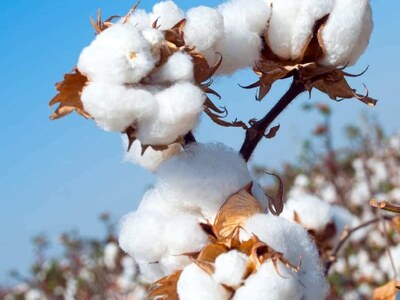Cotton Production Shortfall Threatens Pakistan’s Textile Industry
Pakistan’s cotton industry is facing a considerable decrease in production, potentially destabilizing the nation’s textile sector and overall economic well-being. This was highlighted in a recent report by the Pakistan Cotton Ginners Association (PCGA).
The PCGA’s report, issued on August 15, 2025, indicates a drop in national cotton arrivals to 887,401 bales this year, a steep decline from the 1,075,028 bales recorded by the same time in 2024. This decrease of 187,627 bales, equivalent to a 17.45 percent reduction, has raised concerns throughout Pakistan’s agricultural and industrial landscapes.
The implications of this shortfall extend beyond agriculture. Cotton is a crucial element of Pakistan’s textile industry, a major source of export revenue, and a provider of income for numerous farmers nationwide.
Regional Analysis of Cotton Production
Punjab
Cotton arrivals in Punjab totaled 369,550 bales, which is 23,186 bales less than the previous year, marking a 5.90 percent decrease. Although the smallest percentage decline among the major cotton-producing provinces, this reduction still creates significant obstacles for the region’s agricultural economy.
Sindh
The situation is more critical in Sindh, where cotton arrivals have fallen to 517,851 bales from 682,292 bales the previous year. This substantial decrease of 164,441 bales signifies a 24.10 percent drop, making Sindh the most severely affected province regarding cotton production.
Balochistan
In contrast to the overall national trend, Balochistan has shown resilience, with cotton arrivals rising to 30,600 bales, compared to 26,100 bales the previous year. This increase of 4,500 bales, or 17.24 percent, offers a positive exception in an otherwise difficult situation.
The report mentions that 244 ginning factories remain operational across the country, processing the reduced cotton volumes.
Challenges in Punjab’s Cotton Sector
Punjab’s cotton sector is grappling with multiple challenges that have significantly affected production levels. The persistent cotton leaf curl virus remains a primary concern, while destructive pests like whitefly, mealybug, and thrips have caused widespread crop damage.
Unfavorable weather conditions have intensified the difficulties, with recent heavy rainfall, diminished boll size and weight, and intense heat waves in June and July leading to increased fruit shedding. These adverse conditions have not only reduced crop yields but have also negatively impacted farmers’ incomes, placing extra pressure on the provincial economy. Given these challenges, achieving Punjab’s ambitious production target of 5.5 million bales this year appears increasingly unlikely.
Factors Contributing to Sindh’s Decline
Sindh’s significant decline in cotton output is primarily due to an approximate 35 percent reduction in cultivated area, largely resulting from water shortages during the crucial sowing period. The province’s agricultural sector has also been impacted by severe heatwaves in June and July, which severely damaged existing crops. The crisis is worsened by the prevalence of cotton leaf curl virus, limited access to high-quality seeds, and rising input costs. Despite these considerable challenges, production estimates for Sindh are around 2 million bales.
Economic Implications and Recommendations
The PCGA report emphasizes that Pakistan’s cotton crisis extends beyond agricultural concerns, presenting significant economic risks to the country. The shortage of raw cotton could disrupt the textile industry, decrease export revenues, deplete foreign exchange reserves, and slow down overall industrial growth.
The Head Transfer of Technology Central Cotton Research Institute Multan Sajid Mahmood said that urgent national-level intervention is needed to revitalize the cotton sector and prevent further economic decline. The report suggests several crucial steps for addressing the crisis, including increased funding for agricultural research institutions to develop high-yielding, climate-resilient, and pest-resistant cotton varieties tailored to local conditions.
According to Sajid, comprehensive support, including access to quality seeds, subsidized fertilizers, and reliable water availability, is crucial to make cotton farming profitable for farmers. He emphasized the importance of implementing support price measures for cotton to protect farmers from market exploitation and ensure fair compensation.
The PCGA report concludes with a strong warning: without timely and effective investment in the cotton sector, Pakistan may face spending billions of dollars on raw material imports, further increasing the trade deficit and worsening the country’s financial instability. Sajid Mahmood further stated that revitalizing the cotton industry is directly linked to improving the national economy, requiring consistent policies, long-term strategic planning, and farmer-friendly measures as an immediate priority.
The report is a call for policymakers, agricultural experts, and economic planners to collaborate on comprehensive solutions that can restore Pakistan’s position as a major cotton producer and protect the livelihoods of millions who depend on this vital agricultural sector.



Comments (0)
No comments yet. Be the first to comment!
Leave a Comment